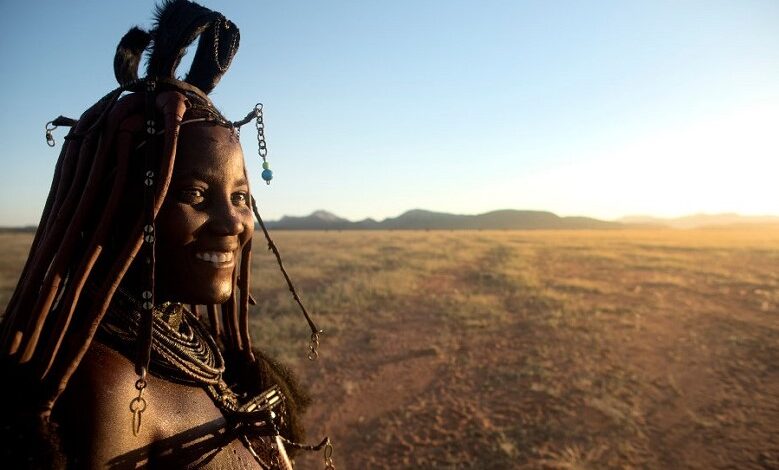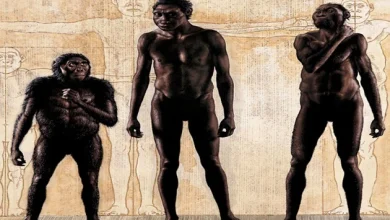African Cultures: Some traditions of the African tribe

The indigenous peoples of Africa are as diverse as the lands in which they have roamed for millennia. Even though the “Black Continent” culture is actively progressing, the savage tribes still wield tremendous influence.
Today, there is a tendency towards abrasion of boundaries and contradictions between different African peoples. However, any African to any of the tribes regard as a sign of great honor and pride. The indigenous people sacredly honor the traditions and customs of their ancestors
On December 25, when Christians celebrate Christmas, the African Republic of Mozambique celebrates Family Day. It is not surprising: 99 percent of the country’s population are Mozambican peoples who adhere to African beliefs. Africa is rich in traditions. These become especially noticeable in the example of the family: about how the “cells of society” are built in different tribes,
Some African tribes and their traditions
Bushmen
The Bushmen are a small tribe of hunting in South Africa.
Ethnographers note that the tribe has no leaders. This role assigns to the head of the family: he enjoys more rights than others. Also, the Bushmen respect the older people of the tribe – a storehouse of knowledge.
The community considers one big family, regardless of kinship. The Bushmen have a powerful sense of mutual assistance. If a child finds fruit, he will never eat them but will bring the find to the camp, and the elders will share the discovery equally.
The harsh living conditions dictate the same cruel traditions. Usually, Bushmen breastfeed children for several years until the next birth, three or four years later. According to the laws of the desert, a mother-bushwoman kills a newborn if he was born earlier than the due time. Thus, it makes it possible for the previous child to survive.
Nuba – people of the hills
Nubians are a tribe living on the border of North Sudan and South Sudan.
The Nuba has some rather curious family customs. Every year the tribe organizes dances where the girls choose their partners. If everything went well, and the young man decided to become a family, a whole mechanism starts. So, before calling himself a husband, a young man must build a house for his bride. Until that moment, he has no right to live with his chosen one – only secretly visit her under cover of night.
Even the birth of a joint child does not give grounds for the girl’s family to recognize his father as their daughter’s legal spouse.
When the house builds, can the boy and girl sleep together but – interestingly – not eat. Only a year later, when the marriage is time-tested, it is recognized as official, and the spouses can eat, as they say, “from the same pot.”
Mursi – inhabiting paradise
Mursi has a rather colorful mythology. According to her, the Omo Valley, where this Ethiopian tribe lives, is the Garden of Eden.
The females of this rather warlike tribe look unusual due to their traditional labial discs. There are several versions of what this custom means. According to one of them, the disc shows a young woman’s family’s social status. For instance, you can determine the number of cattle expected for a woman as a dowry by the type of disc.
According to ethnographers, after a woman with a wooden “plate” gets married, she is replaced with a clay one. The diameter of the disc, by the way, can reach thirty centimeters.
Swazi tribe – performing a dance
One of the most colorful activities in the Kingdom of Swaziland takes place annually in late August-early September and time to coincide with the time the king chooses another bride. It is called “Dance of the Reed”: virgins from all over the kingdom gather near the Queen Mother’s palace. The meaning of the ceremony is to show the king his beauty and ability to dance.
Tuaregs – descendants of the queen
These Berber people live in Mali, Niger, Burkina Faso, Morocco, Algeria, and Libya. The Tuaregs consider Tin Hinan, a legendary queen who lived in the IV century, to be the ancestor of their tribes.
By religion, the Tuaregs are Sunni Muslims. However, they retained many pre-Islamic traditions, such as maternal inheritance. Hence the bizarre confusion: even though Tuaregs profess Islam, where polygamy is allowed, a real Tuareg marries once in a lifetime.
Echoes of matriarchy are also noticeable in the fact that women respect in Tuareg society. Girls learn to read and write from an early age, and it is permissible for a man to be illiterate. Women own land, family values and have the right to divorce their husbands. In this case, not a woman, but a man leaves the house.
Tuaregs, by the way, are the only people in the world who have not only a woman but a man who must cover his face.
Hamer – believes in Genies
Ethiopia, the Hamer tribe, believes that natural objects have a soul, in genies that can take the form of a person or an animal.
Hamer is Sunni Muslims. As a rule, women of the tribe marry men much older than themselves. A girl formally considers a bride as soon as she turns 12.
Their collars can determine the marital status of the tribe. So, only the first wife gets a non-removable collar made of metal and dry-cured skin. The rest wear iron hoops, the number of which indicates the serial number of the spouse. His earrings can count the number of wives a man has.
The men of the tribe are allowed to have four wives. When the husband dies, his widow becomes the family’s head: she manages the husband’s younger brother’s affairs and looks after his livestock if his parents are dead. As a rule, windows do not remarry.
By the way, the researchers note that the morals in families are rather harsh: a Hamer husband must beat his wives on certain days, thus expressing love. The more significant scars a woman has the more beauty and, therefore, more beloved she consider.
Himba – no idea for writing
In the north of Namibia, near the border with Angola, the Himba tribe lives.
Himba does not need civilization’s attributes; they do not use technology and do not know writing. Their main wealth is cows. You can buy yourself a wife for them. At eight years old, a girl becomes a bride and valued at four cows and a cow at $700. As the bride grows up, the price for her rises.
Himba is allowed to have up to four wives, although the elders will enable themselves to have six.
Simultaneously, as African researchers say, even decrepit old people marry: to not lose face, they “lend” their young wives to their elder sons. Thus, by the age of 30, when the average Himba man starts a family, he may already have several children.
Tsamai – the Omo Valley
The Tsamai, who live in rural Ethiopia, unlike most neighboring tribes, do not have a custom according to which the girl must remain a virgin until marriage. However, even though a representative of the tribe is not forbidden to have a partner before marriage, if the relationship led to a child’s birth, the couple must marry.
It also happens that her parents select the future spouse for the daughter. Simultaneously, the girls are not particularly interested in the opinion: if the parents agree, preparations for the celebration begin. Agreeing can be difficult. The main form of bride price is livestock. The groom can add grains, clothes, and coffee beans for the weight of the marriage proposal. Since the area is not rich in resources, all the future spouse’s relatives help collect the ransom.
Except for honeymoon, same couples do not eat from the same plate.
The tribe, like many others, is polygamous: men are allowed to have multiple wives. Moreover, marriages between close relatives are strictly prohibited.




